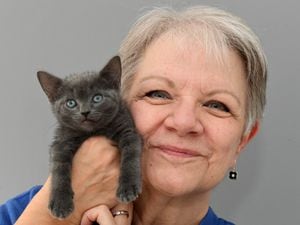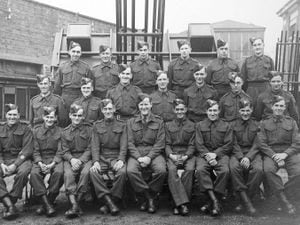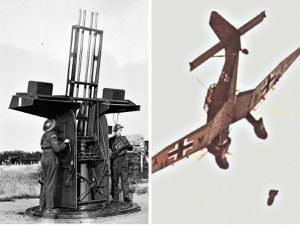Mount Everest's deadliest season: Is it time to regulate climbers scaling the peak?
He was struggling to breathe. The bitter chill hit Adam Booth sharp in the face as he found himself within 220 yards of entering the history books.
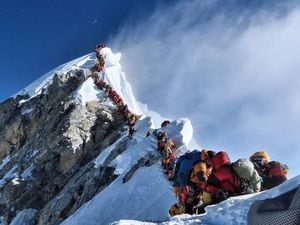
Having already conquered Mount Everest and neighbouring Lhotse in two days, he was going for the hat-trick.
Another 650ft or so would have seen him become only the third person in the world to reach the summits of Everest, Lhotse and Nuptse in successive days.
But he turned back.
"The conditions were very difficult," he says. "Some people might have ploughed on, but you can get killed doing that. My experience as a climber told me to stop."
Climbing the highest peaks in the world is a dangerous business, and as a seasoned climber Adam made a difficult decision.
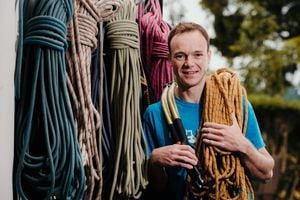
On Monday John Kulish, a 61-year-old American, became the 11th person to die on Mount Everest in the space of two weeks, amid concerns that a surge of inexperienced climbers and cut-price package tours are putting lives in danger.
Highlighting concerns about overcrowding, a photograph by Nirmal Purja last week captured a tailback of about 300 fellow climbers snaking their way up the final stretches of the mountain.
When Adam, a 37-year-old GP from Shrewsbury, saw the photograph, his initial thoughts were of incredulity, and believes that the guides who left them standing around have serious questions to answer.
"My immediate reaction was disbelief that any of them were still waiting there," he says. "It's just so obvious to me that standing still for that length of time at that altitude would hugely increase your risk of succumbing to altitude, so the decision to turn around would be very straightforward.

"I find it sad that some of the people in that queue may not have realised that, and that their ‘guides’ had not made them turn around."
For Adam, who has twice scaled Everest, this sadness is particularly raw, as he knew one of the climbers who died on the mountain last week.
Robin Fisher, 44, from Birmingham, had approached Adam for advice before the climb. He emailed Adam for information last year, and met him during his talk at Shrewsbury's Theatre Severn in March.
"He came and introduced himself, and his partner Kristyn, in the interval," he says. "I could sense his passion and excitement for the upcoming challenge, and kept in email contact during his expedition. I was shocked and saddened to hear the news that he had collapsed after reaching the summit and died high on the mountain."
On his last few social media posts before his fateful final ascent, Robin said he was hoping that postponing the last stage of the climb until Saturday would reduce the risk of being caught in crowds.
The summit of Everest is 29,029ft above sea level, but it is the last 3,000ft which is where the real difficulties lie, being known as the ‘death zone’ – with good reason.
“There’s so little oxygen, you can’t sustain life there for long,” says Adam.
“As soon as you get to 8,000 metres (26,247ft), it is so hard to breath, every step is extremely difficult.
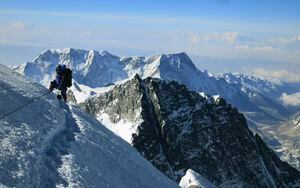
“You could stay up there for perhaps a week, but you wouldn’t be in very good shape at the end of it. Most people who climb Everest go down the same night, they can stay in the death zone for 24 to 48 hours.”
Sadly, Adam and his fellow climbers had to come to terms with the death of a member of their team, a 63-year-old doctor from Macedonia, during last year’s expedition. “We don’t know how he died, but we heard he had a heart attack,” he says.
“It’s terrible, there have been several other deaths on the mountain this year, but that could have happened in the supermarket.”
Despite the tragedies, Adam says it is important not to overplay reports of overcrowding.
"While over-crowding may have contributed to some of the deaths, they were a minority of cases," he says.
"From what I have read most of the deaths, including Robin’s, occurred as a result of high altitude illness which is a well-recognised risk for high altitude mountaineers and happens every season."
The Nepalese government is reported to be considering a reduction in the number of permits it issues for people wanting to climb Everest, but Adam thinks that would be a mistake.
"Personally I don’t like the idea of limiting the number of permits or having an experience cut-off, it goes against the idea of climbing just being about the right to choose your own challenge, and accept the consequences of your actions," he says.
"Those of us who are capable of making our own decisions on the mountain are usually able to avoid crowds in the first place, or at least make the decision to turn around or go past if we are unfortunate enough to find ourselves caught in a queue."
But he is concerned that there is little in the way of who can operate as a guide on Everest, and says there may well be a case for some form of regulation.
"As a climber I am fully aware of the risks involved," he says.

"I’m sure everyone attempting to climb Everest knows there are serious risks involved. But its still tragic when the worst happens, particularly for family and friends, and other climbers and rescuers who are put at extra risk on the mountain."
But he says it must be up to the individual to make their own decisions regarding their own personal safety, otherwise that would rob mountaineering of one of its greatest challenges.
"For me one of the most rewarding and compelling things about mountaineering is the continuous risk analysis and decision making," he says
"The consequences are so real; potentially the difference between one of the best experiences of your life, or death."

